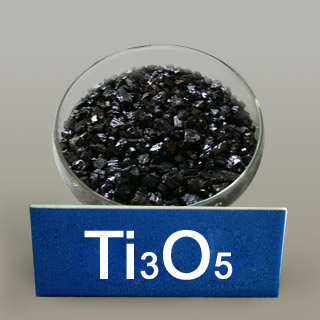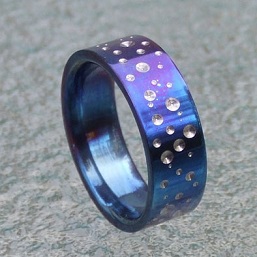|
Titanium oxide – there is more besides the ever present titanium dioxide
From titanium oxide’s class the best known is titanium dioxide – TiO2, mostly because of its enormous use as a pigment in the chemical industry and, partly, because of the ongoing controversy about potential harmful effects on human organism caused by TIO2 use in nano-particle form in health and beauty products such as sunscreens and mineral makeup.

However, titanium display a huge reactivity with oxygen, and the titanium - oxygen has many results, depending on the valence of the titanium atoms in each specific reaction. Titanium dioxide is also known as titanium (IV) oxide, with IV (four in roman numerals) designating titanium valence in the chemical reaction. Similarly, there is titanium (II) oxide (titanium monoxide) – TIO, then titanium (III) oxide – Ti2O3, Ti3O and Ti2O. Most of these are entirely different in shape and form than the white powder form titanium dioxide normally has. Titanium makes also a whole oxides class with formula TinO2n−1 where n ranges from 3 - 9 inclusive.
Titanium monoxide’s most widespread applications is in thin films which are used mostly as an addition to metallic surfaces in order to change the color when used as accessories. We’re talking about watch bands, eyeglass frames, door knobs and many other things. You know that a titanium monoxide layer is involved when you encounter unnatural metallic colors, e.g. blue. In order to make such a color on metallic surfaces a transparent oxide film is formed on the surface, causing a light interference that is the cause of the color. The exact color varies with the thickness of the film. However it is difficult to form such a thin film while precisely controlling the thickness. That’s why most products do not exhibit a single color, but rather an ensemble of the entire visible light spectrum.
Generally, this type of films is made by a mixture of various titanium oxides, more often titanium monoxide and TI2O3. The type of oxides and, more important, the quantity of oxygen in this films are crucial for imposing a dominant color, relative stable in the variety of the viewpoints.
UV-irradiation of several TitVG catalysts suspended in oxygenated acetonitrile led to the photocatalytic oxidation of 1-octanol to l-octanal. No products were detected in the dark under the same reaction conditions. The photo catalytic oxidation of l-octanol on highly dispersed titanium oxide catalysts anchored onto transparent Vycor glass was compared with that obtained on the Ti02 powder. The time profile for the conversion of l-octanol under UV-irradiation is stable at around 300 nm. Among these an.Ti/VG catalysts, an.TiNG-l exhibits the highest photo catalytic activity, although an.TiG-l has the lowest Ti02 content. Among an.TiNG catalysts, the photo catalytic activity of the m.Ti/VG-l catalyst is much higher than that of an.Ti/VG-3 or an.Ti/VG-5. Increasing the number of Ti-0 layers of the an.Ti/VG catalysts caused the photo catalytic activity of the titanium oxide species (per unit weight of Ti) to decrease remarkably. Clear, isn’t it?
Return from Titanium oxide to Titanium Dioxide Return from Titanium oxide to Titanium Home Page
|
 This is also augmented by the fact that the color varies with the angle at which the coated surface is looked at. Namely, the surface may be blue when viewed from one direction, the front, for example, and red, when looked from the sides.
This is also augmented by the fact that the color varies with the angle at which the coated surface is looked at. Namely, the surface may be blue when viewed from one direction, the front, for example, and red, when looked from the sides.

